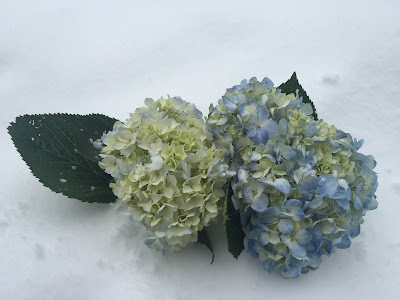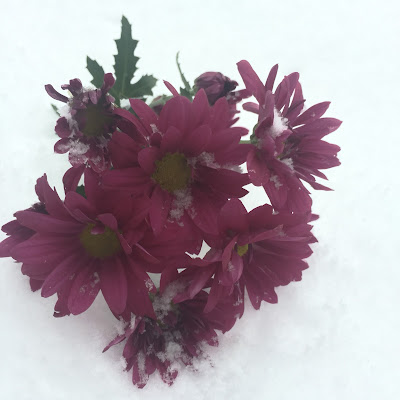 |
| Great Dane Elliott enjoying a wee bouquet of blooms. |
It’s hot. The sun beats
down from a cloudless sky through stagnant humid air, falling upon human,
animal, plant and the inanimate alike. The streets absorb the heat to the point
that the tar becomes almost fluid and if a car drove by it would surely find itself
stuck. As you stand stationary you feel beads of sweat form and roll down your
face and back; any movement would surely cause a sweat so profuse it would seep
through your clothes leaving you wet, embarrassed and somehow even hotter
still. The air is so thick you could practically chew on it if it wasn’t
choking you. Vision clouding waves of heat fall into view, distorting the
landscape of motionless blades of grass and unmoving trees full and heavy with
summer’s bounty. Squirrels, birds, feral cats and that fat backyard groundhog
you nicknamed Sebastian long for any kind relief as they struggle just to
breathe, and you swear they somehow know about air conditioning and are jealous
when they see humans retreat indoors with their beloved chosen pets. The sun is
a relentless furnace with no breeze to calm its fiery breath. It’s just... So. Damn.
Hot. These are the dog days of summer.
 |
| Poodle Winston couldn't be happier with his yellow ranunculus! |
We are in the thick of
it! The Old Farmer's Almanac lists the traditional
period of the Dog Days as the 40 days beginning July 3 and ending August 11. We
thought the best way to pass this time would be to pair some of our favorite
pooches with pretty petals!
 |
| Miniature poodle Sherman is celebrating with flowers! |
The
Romans referred to the dog days as diēs
caniculārēs and associated the hot weather with the star Sirius. They
considered Sirius to be the "Dog Star" because it is the brightest
star in the constellation Canis Major or Great Dog.
 |
| Layla enjoyed her visit to Steins! |
The
Ancient Greeks thought that Sirius's emanations could affect dogs adversely,
making them behave abnormally during the "dog days," the hottest days
of the summer. Their excessive panting in hot weather was thought to place them
at risk of desiccation and disease.
 |
| Those cats are interfering with my flowers! |
According
to Brady’s Clavis Calendaria,
1813, the Dog Days were popularly believed to be an evil time "the Sea
boiled, the Wine turned sour, Dogs grew mad, and all other creatures became
languid; causing to man, among other diseases, burning fevers, hysterics, and
phrensies."
 |
If you can tolerate an outdoor picnic during the dog days
of summer, don't forget to pack your poodle! |
Here
at Stein Your Florist we have a mixed bag of feelings about the Dog Days of
Summer… Some of us love it, enjoying every second they can in the heat, reveling
in a visit to the beach, basking in the sun’s rays and holding joyous backyard barbecues full of levity and fireworks…
 |
| Leo loves his rainbow roses! |
Others
not so much, longing for the days of winter, stating “those snowstorms weren’t
so bad,” lamenting over how hot it’s going to be when they get in their cars to
go home, complaining about their summer wardrobe and emphatically stating that
the flowers just don’t like it!
 |
| That's one patriotic pooch! |
Like
it or lump it, it is what it is. The Dog Days of Summer are here, but autumn’s
relief will arrive soon enough and we may find that we miss summer’s verdant
hues and that devastating feeling of passing out as soon as you step outside.
 |
| Elliott is looking good in his floral anklet! |
 |
| Sherman is stylin' in his collar of black-eyed Susans! |
 |
It's hot out! Stay inside and pamper your pooch with
peonies and a PETicure (wow, that was a cheesy pun even for us). |
 |
| Jah Rastafari! |
 |
For those hot summer weddings when you
ask, "why didn't we get married in the spring?" |




























